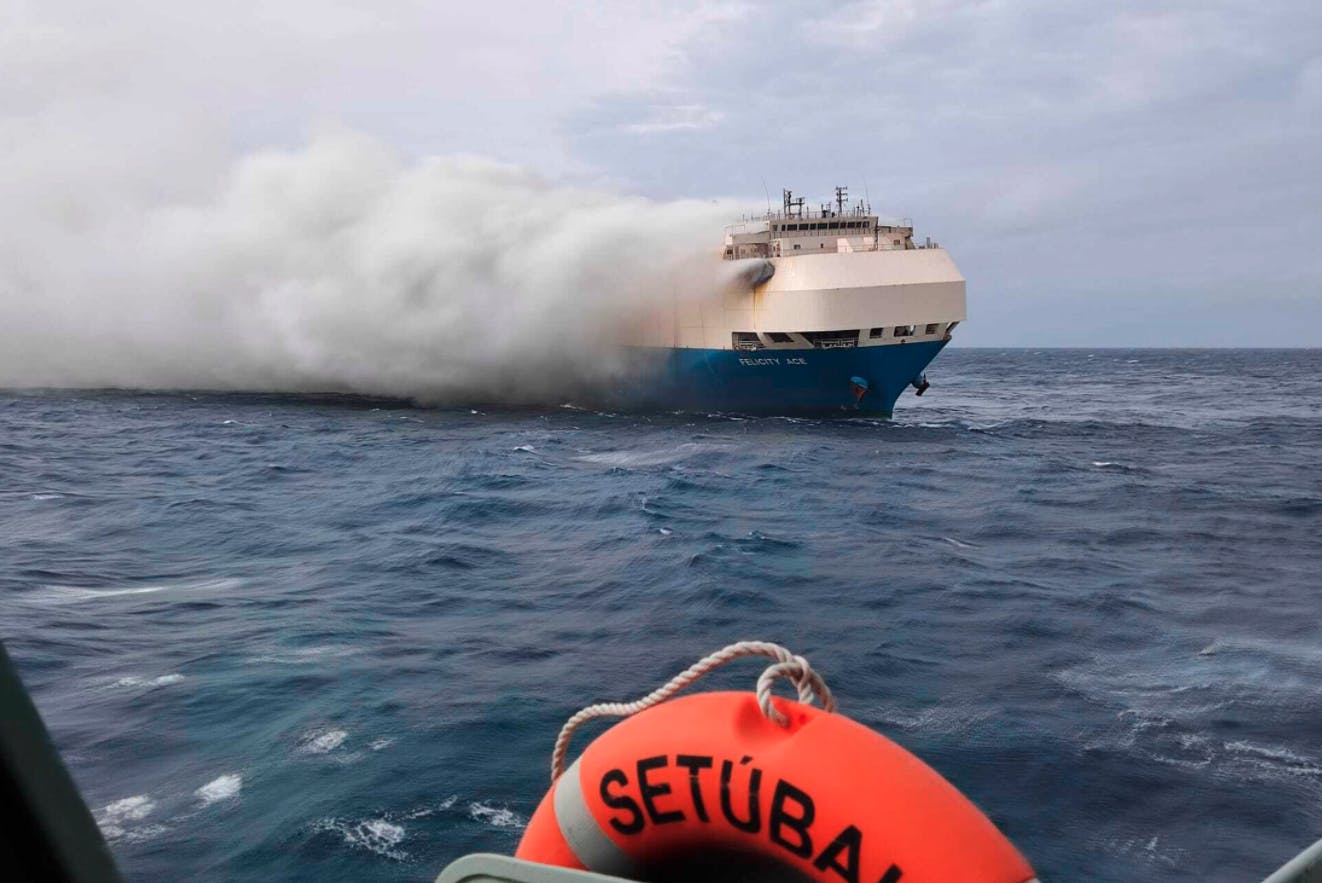Media | Articles
A Sinking Feeling: EVs are on fire, hopefully not literally
Nobody knows exactly why the Felicity Ace caught fire in the North Atlantic, sinking on March 1 and sending its cargo of 1900 Audis, 1100 Porsches, 500 VWs, 189 Bentleys, and 85 Lamborghinis nearly 2 miles to the bottom. Some of those cars were electric, and if a lithium-ion battery didn’t start the fire, the packs—which are stubbornly flammable once ignited—probably made it worse, according to the Portuguese Navy, which rescued the Felicity’s crew.
Thus, the industry was shaken by yet another complication in its trillion-dollar conversion to electrification: how to ship vehicles whose batteries are potential fire-bombs. It comes amid a swell of optimism for EV demand that has automakers racing to rewrite their product plans. Hyundai has nearly doubled its projected EV volume, to 1.7 million a year by 2026. And Ford, with 200,000 reservations for the electric F-150 Lightning, and amid hot demand for the Mustang Mach-E, has delayed two future EV models so it can catch up.
Ford president Jim Farley has also taken the dramatic step of cleaving his 119-year-old company into two entities. Ford Blue will continue to produce internal-combustion vehicles while Ford Model e will be the all-electric division, with Farley as its head. “The reality is our legacy organization has been holding us back,” Farley said. Wall Street approves; investors have pumped up auto stocks in general by nearly $2 trillion.

Still, cars must get to market, which mainly means going on boats. Fires on drive-aboard car transporters—what the shipping industry calls “roll on-roll off” or “ro-ro” vessels—are not uncommon. Five ro-ro ship fires between 2017 and 2019 were attributed to various causes, none of them related to EV batteries. However, the industry is now worried that EV batteries could make any ship fire much worse. Marine shippers are looking at the implications for passenger ferries, too. The notion that dubiously maintained, 10-year-old EVs—along with electric tractor-trailers packing enormous batteries—will eventually be common on long-haul ferry crossings has the ferry industry studying new fire-suppression, gas-detection, and air-circulation tech. Any change creates its own challenges; if a ferry’s sprinkler system is upsized to deal with tenacious battery fires, the capacity for pumping water overboard also needs to increase, lest the sprinkler system founder the ship.

The air cargo industry began tackling the problem years ago when device makers like Apple started shipping their most in-demand products by air. If you own an iPhone, it likely came across the Pacific in a Boeing 747-8 freighter, which can haul about 200,000 devices per run. The International Air Transport Association figures billions of cells have gone by air, and all it takes is one damaged or mis-manufactured cell to cause “thermal runaway” and a fire. A few aircraft fires in the early days of lithium-ion technology led the IATA to recommend rules around packing and charge state, also encouraging air carriers to accept only batteries already fitted into factory-packaged devices, thus avoiding the risk that badly made counterfeit cells will spark an air disaster.
Marketplace
Buy and sell classics with confidence
As we all know, shipping oil on the high seas carries its own catastrophic risks. However, as the EV revolution accelerates, new hazards promise to make the industry’s learning curve very steep.













